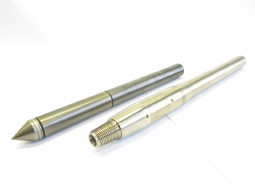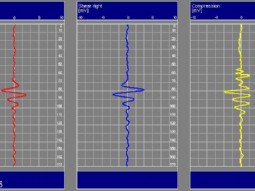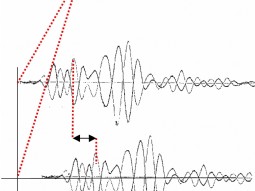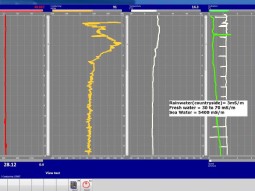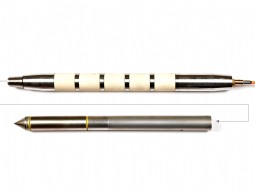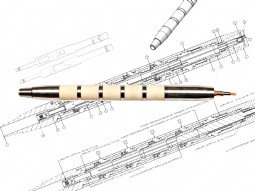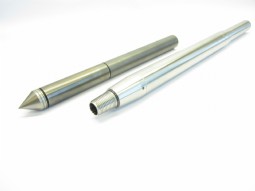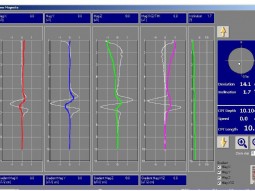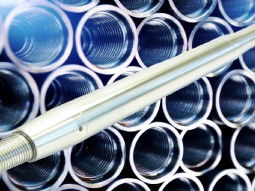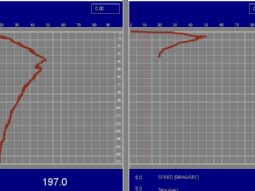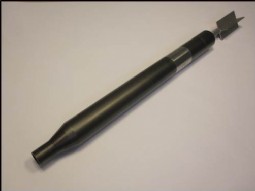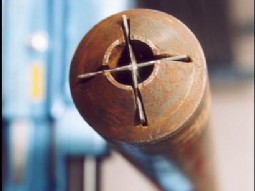Digital CPT(U) data acquisition system
To build a complete picture of the subsoil the requirement for different parameters from in-situ soil investigation is increasing. For example it may be required to derive both the in-situ soil properties like porosity and density as the location of any unexploded explosives; or both the saltwater-carrying layers as the dynamic properties like electrical conductivity and stress. In general these parameters are acquired by separate systems (conductivity, magneto, seismic etc.). Time and information are lost when switching between systems. A CPT(U) data acquisition system that minimizes these effects creates added value.
The engineers from A.P. van den Berg developed the Icone, a digital cone, and Icontrol, a digital data logger. The Icone measures the four standard CPT parameters: cone tip resistance (qc), friction (fs), pore water pressure (u) and inclination (Ix/y). Digital communication is creating room for additional parameters, without changing cables or control boxes and CPT data loggers. The Icone is easily extendable with click-on modules to measure other than the four standard parameters and each module is automatically recognized by the digital data logger. It’s a true plug & play system.
Seismic CPT
Elastic soil properties are essential input for the prediction of ground-surface motions related to earthquake excitation and for the design of foundations for vibrating equipment, for the assessment of offshore structure behavior during wave loading and to predict deformations around excavations. To investigate these elastic properties of the soil, seismic CPTs can be performed. A.P. van den Berg’s Icone Seismic Module is an excellent instrument for these tests. It contains 3 accelero-meters to receive left and right shear waves as well as compression waves.
Click here to read more about Seismic CPT
CPTR Conductivity
The measurement of electrical conductivity in the subsoil is a function of the conductivity of the pore water and of the soil particles, the first being the dominant factor. With A.P. van den Berg's Conductivity Module, changes in the concentration of (dissolved) electrolytes are determined without specifying the exact nature of these electrolytes. Therefore the module facilitates separation of zones with differentiated water content, including determining the water table depth and the thickness of the capillary ascent zone or separation of fresh and salt water carrying soil layers. Another very important application of the conductivity module is detection of (the degree of) contamination in the soil. Further soil investigation should provide details on the actual contaminants.
Click here to read more about CPTR Conductivity tests
Magneto meter tests
Unknown structures and obstacles are risk factors in the execution of earth and foundation works. To avoid damage and interruptions of work, these underground elements should be identified and mapped. A lot of underground structures and obstacles contain metal. The combination of this physical property and the natural presence of a magnetic field provides grounds for a very e ffective detection method. The Icone Magneto Module from A.P. van den Berg is very suitable for the detection and localization of anomalies in the magnetic field.
Click here to read more about Magneto meter tests
Vane shear tests
At locations where the soil is exposed to high and varying forces, for example at a dike or around a mining area, additional parameters for stability analysis should often be measured. Determination of the shear strength is a commonly used method to define soil stability. A.P. van den Berg’s Icone Vane is an excellent instrument for in-situ measurement and evaluation of the shear strength. It can be used in soft soils, but also in finegrained soils such as silts, organic peat, tailings and other geomaterials where a prediction of the undrained and remoulded shear strength is required.
datasystem.jpg?website=implementatie&width=255&height=191&func=min&image=2463354f8109.jpg)
digitalcone.jpg?website=implementatie&width=255&height=191&func=min&image=246474fc1966.jpg)
cones5,1015cm.jpg?website=implementatie&width=255&height=191&func=min&image=247031dd8d4a.jpg)
resultsinCPTsoftware.png?website=implementatie&width=255&height=191&func=min&image=24725616a036.png)
